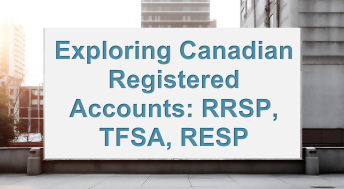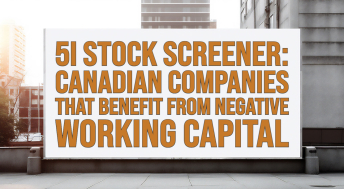Big profits are going to be made when — not if — the market shifts
Most investors — it seems like every investor — are negative these days. There certainly is lots to worry about, you know, just small things such as massive inflation and the threat of nuclear war. Yes, we are in a bear market and it has been painful. But the smartest investors know the conditions existing today are not going to last forever. Investors with a long-term time frame look forward and try to set up their portfolios for the conditions that will exist in the future, not the conditions that exist now. Big profits are going to be made when — not if — the market shifts. If we assume the market will one day rise again, and growth will return to favour, how does one set up their portfolio for that inevitability? Here are five strategies to consider.
Don’t Hold Too Much Cash
The urge to hold cash right now is probably very high. With many stocks down 60 per cent this year, cash looks attractive, even after considering the loss of purchasing power from inflation. But you need to own something other than cash to maximize potential returns in a market recovery. Cash is paying close to five per cent (on some guaranteed investments certificates), but there are stocks that will double or triple when the market shifts to bull mode. Smart investors know to buy when everyone else is selling, and that is certainly the case today.
Own Some High-Growth Stocks — No, Really
Many investors dipping their toes into a bear market will start with ultra-conservative stocks, such as those in the consumer staples and utilities sectors. That’s one strategy, but investors need to look at growth stocks, and smaller companies (see below), if they want really big returns. It is very true that a stock down 80 per cent may never get back to its previous all-time high, but it can still double, triple or more. Growth stocks are absolute pariahs right now, and stocks that used to be 50x sales are now 3x sales. Many companies are still growing at 50-plus per cent, even in a weakening economic environment. Don’t forget that in a recession, investors will likely pay more for companies that can still grow while everything else retreats.
Look for companies growing at 50 per cent today (a Bloomberg screen this week shows 982 North American companies with expected sales growth of 50 per cent or more next year). Even in a recession, many of these will still grow at 20-plus per cent, and that might be very attractive to investors when the economy is contracting.
Don’t Overpay for Safety
Scared investors flock to so-called safe investments, such as food companies and utilities. Again, nothing wrong with this, and most companies in these sectors offer reliable, growing dividends. But investors need to be careful about what they pay for safety. Many companies’ valuations in these sectors are creeping up to high historical levels. Companies with historical average price-to-earnings ratios in the 15x range are seeing valuations bump above 20x. A change in valuation can still result in large losses, even with safe stocks.
We would caution against loading up on safe sectors. Keep diversification in mind. Everybody has to eat, but because of low margins, inflation and higher interest rates can have a serious negative impact on food companies as well. No one wants to see their safe stock decline 25 per cent because they paid too much for it.
Buy Some Long-Term Bonds
Bonds have been crushed this year, and long-term bonds have been decimated as rates and inflation surge. But if we are looking forward, remember that higher rates have a slowing impact on the economy. In a typical business cycle, rates rise, the economy slows and then, eventually, rates peak and start to fall.
In a recession, and assuming interest rates do peak, long-term bonds could be one of the best-performing asset categories. This is impossible to time, of course, but investors today are simply ignoring bonds, and we think that is a mistake.
Small Caps Tend to Lead Markets Higher
We are biased here as we have always focused on small- and mid-cap stocks, but small companies tend to lead the market higher in a recovery. And they are historically cheap. Right now, they are about as cheap as they’ve ever been versus large caps, because scared investors are paying more for the perceived safety of larger companies. Small caps tend to have purely domestic revenues, so you don’t have to worry about the war or recessions in China and Europe. Small caps tend to have clean balance sheets, since banks don’t want to lend them much money. Small caps tend to have higher insider ownership, so executives are highly motivated and aligned with shareholders.
And, of course, small caps are easier for larger companies to acquire. In a recession, many large companies will try to supplement their growth with acquisitions of faster-growing small companies. If current valuations persist, this is likely inevitable.
Take Care,








Comments
Login to post a comment.